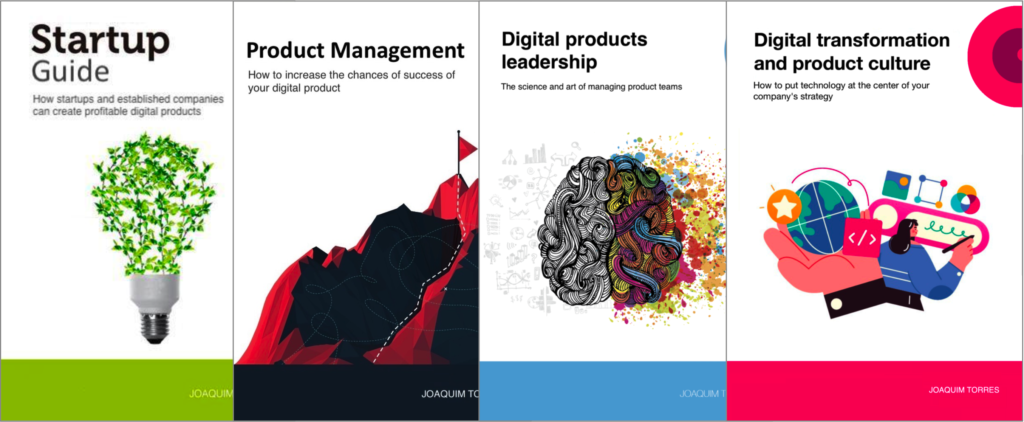Be a “data geek”
6 de January, 2012OKRs, the future of product roadmaps (or how and why we replaced product roadmaps with OKRs)
2 de May, 2016I constantly interact with startups. With some, it’s a one-off conversation — after a talk I give or during a mentoring session in an acceleration program I collaborate with. With others, the relationship is more frequent, with monthly or bimonthly meetings where we discuss their progress and where to invest one of the scarcest resources for anyone — especially people involved in startups: time.

We had been holding monthly meetings. In the early ones, we focused mostly on marketing and attracting more visitors to the site. We worked on Google Ads and Facebook campaigns, including creating and maintaining a Facebook page. Another key point was content creation. All these initiatives had some return — they increased the number of website visitors and Facebook fans. But even so, sales remained very low.
Go sell!

The result? In terms of sales volume, it was excellent! In just two weeks, they managed to sell 50% of what they had sold over all the previous months combined. That alone would’ve been reason enough to celebrate — and to adopt the habit of going to the frontlines regularly (one week per month or one or two days per week).
But even more valuable than the increase in sales was the feedback from customers. Through these sales conversations, the three founders gained a clearer understanding of the problems faced by the people they wanted to serve — real estate agents. They realized that having a website wasn’t enough. What these agents really needed was more leads, more potential buyers. With that insight, they expanded their product offering and began including digital marketing as part of the imobshop portfolio.
In many startup texts, you’ll find what Imobshop did described as a pivot. But in truth, what they did was simply the foundation of product management: talking to customers and potential customers to understand the problems they face, and discovering a solution that not only satisfies them, but one they’re willing to pay for.
And there’s no better way to make that discovery than by trying to sell your product. So, go sell!
How to do it?
I suggest you run this experiment for at least two weeks — a full month would be even better. Here are a few practical tips to guide your “sales sprint”:
- Everyone should participate: developers, designers, product managers. No matter the role — no one writes code. Everyone sells.
- Hold daily stand-ups, either at the end of the day or the beginning of the next, so each person can share what they experienced and what they plan to try next.
- Have weekly retrospectives with prompts like: “What did you like?”, “What didn’t you like?”, “What did you learn?”, “What should we avoid?”, “What new things should we try?”
- If absolutely necessary, set aside just one or two days a week for technical work.
- Set a goal: define how many sales you’d like to achieve during this period. Keep it realistic — one or two sales per day per person is a good benchmark.
- Add a phone number to your website — it builds trust with potential customers.
- Put your phone number on the ads — saves you clicks and filters out the curious from the interested.
- Install live chat on the website and product. Ideally, use a tool that triggers a message after a few seconds, like: “Hi, I’m [name], can I help you with anything?” Some options: Olark, LiveChat, Zopim
- If a call or chat leads to a demo, tools like Skype or Join.me work well.
- At the end of the “sales month,” run a full retrospective to decide your next steps. Figure out what needs to be adjusted in the product based on what you learned.
So, what are you waiting for? Go sell!
Workshops, coaching, and advisory services
I’ve been helping companies and their leaders (CPOs, heads of product, CTOs, CEOs, tech founders, and heads of digital transformation) bridge the gap between business and technology through workshops, coaching, and advisory services on product management and digital transformation.
Digital Product Management Books
Do you work with digital products? Do you want to know more about managing a digital product to increase its chances of success, solve its users’ problems, and achieve the company’s objectives? Check out my Digital Product Management books, where I share what I learned during my 30+ years of experience in creating and managing digital products:
- Digital transformation and product culture: How to put technology at the center of your company’s strategy
- Leading Product Development: The art and science of managing product teams
- Product Management: How to increase the chances of success of your digital product
- Startup Guide: How startups and established companies can create profitable digital products


